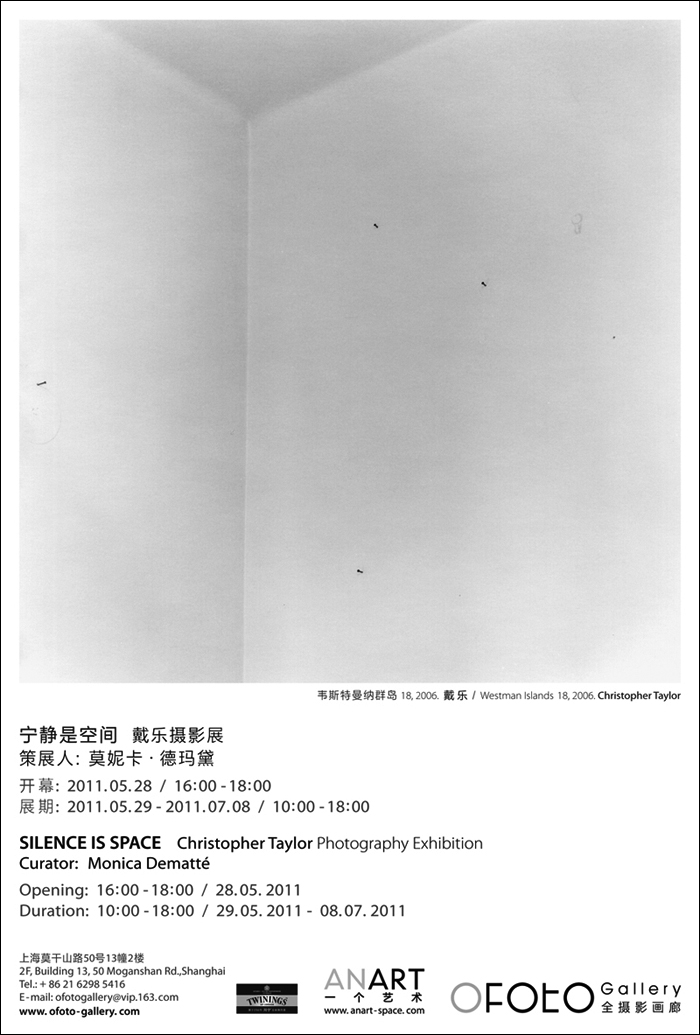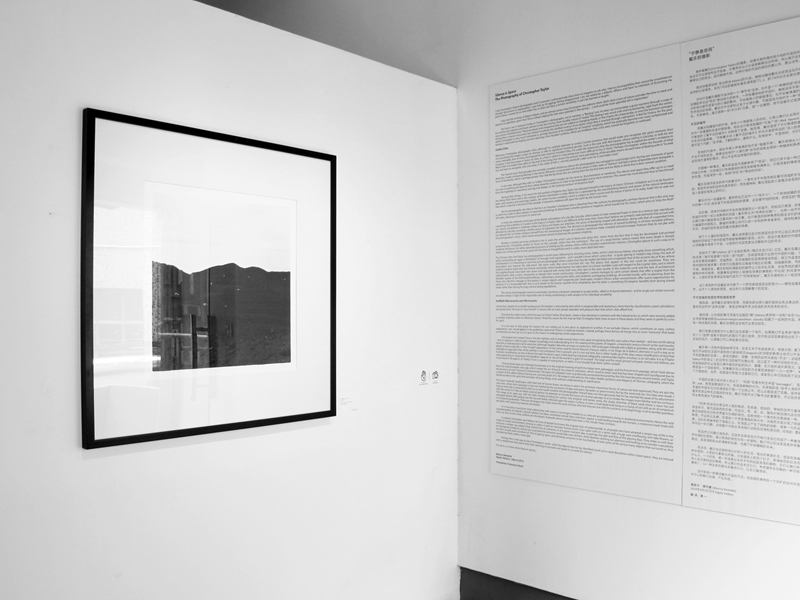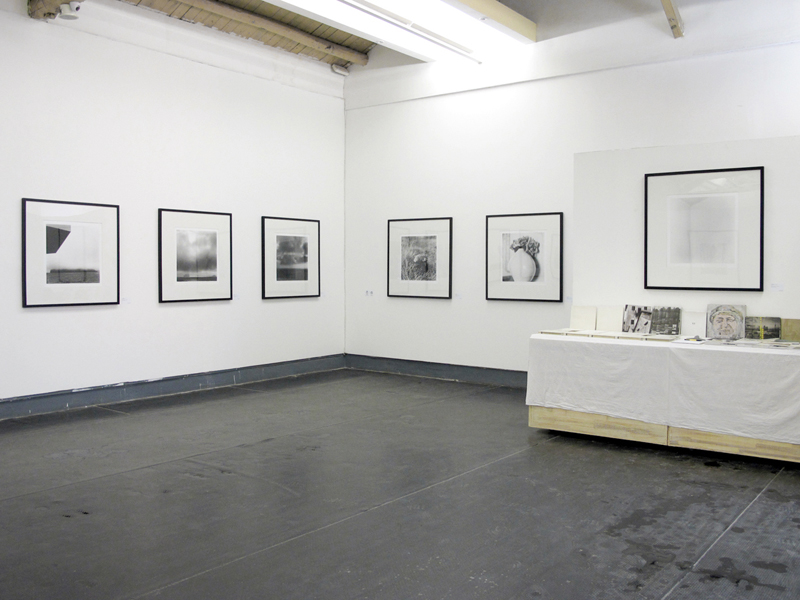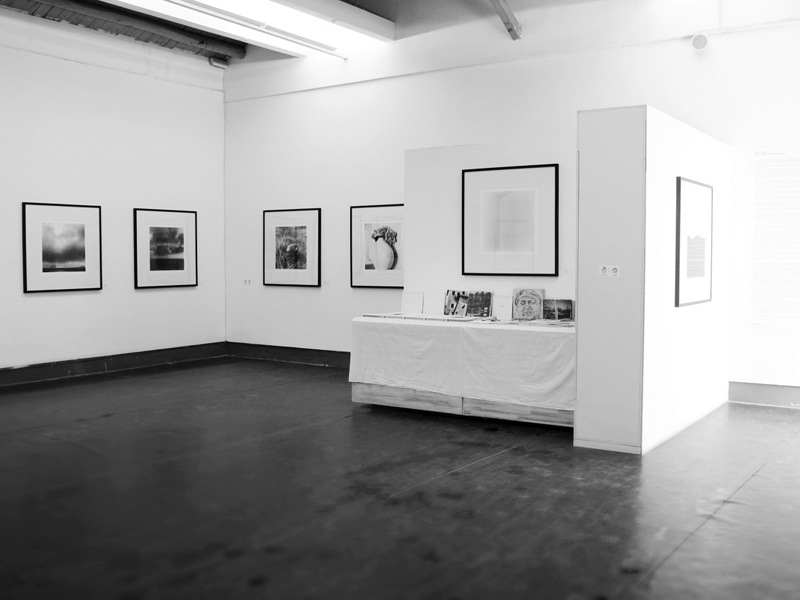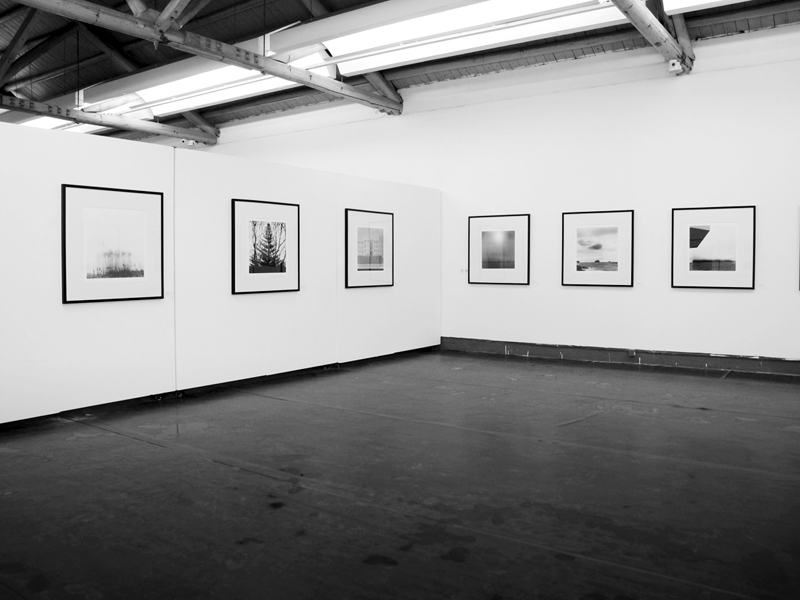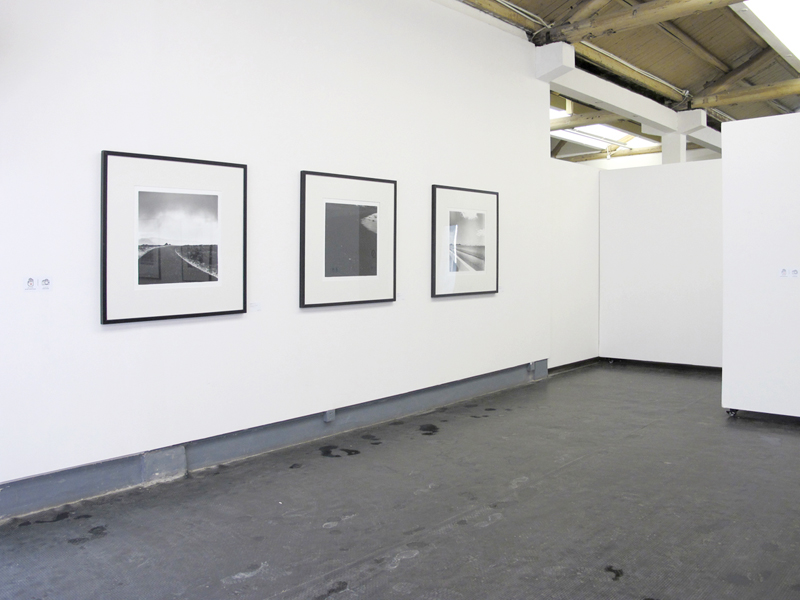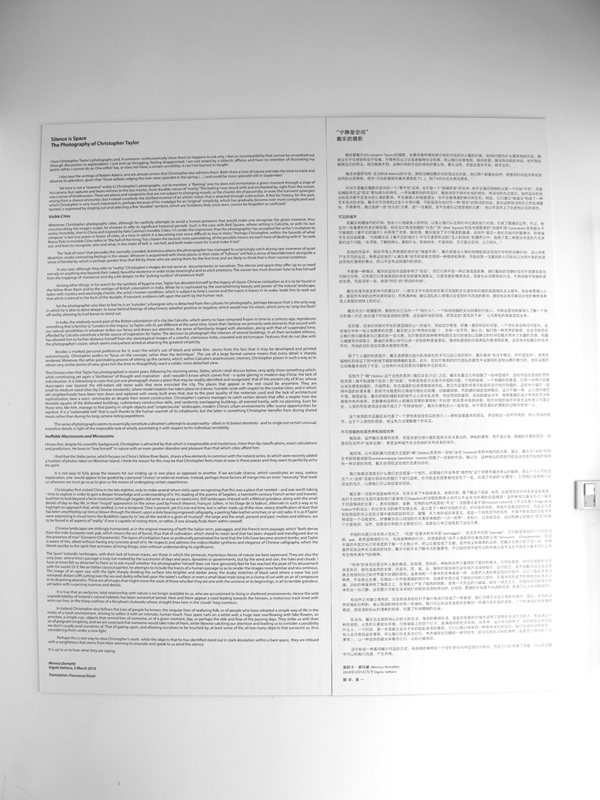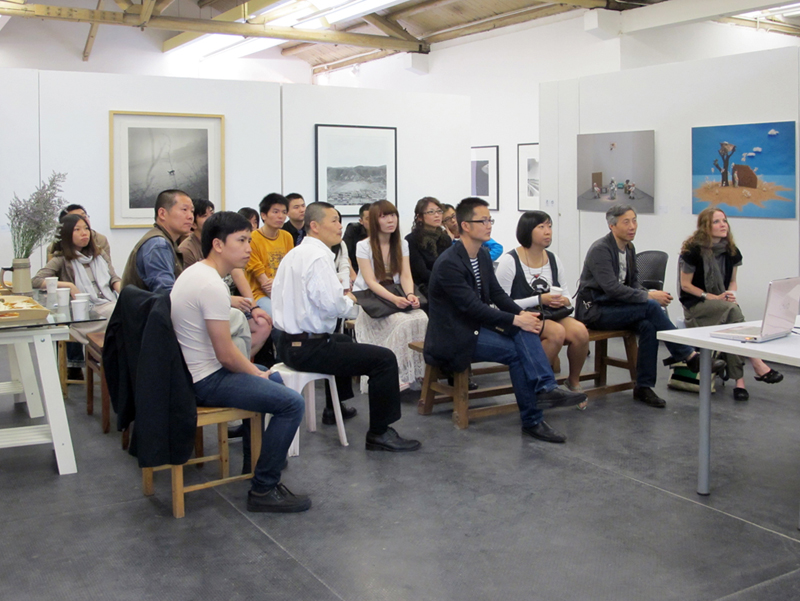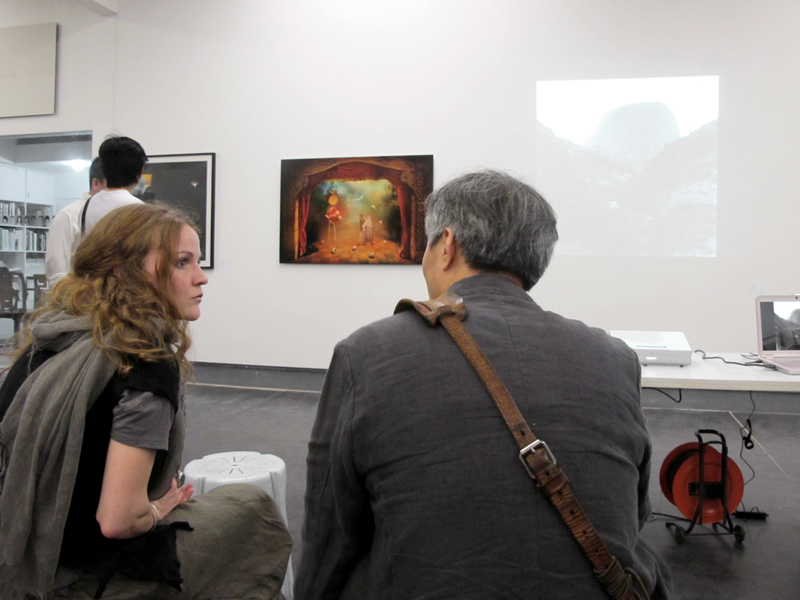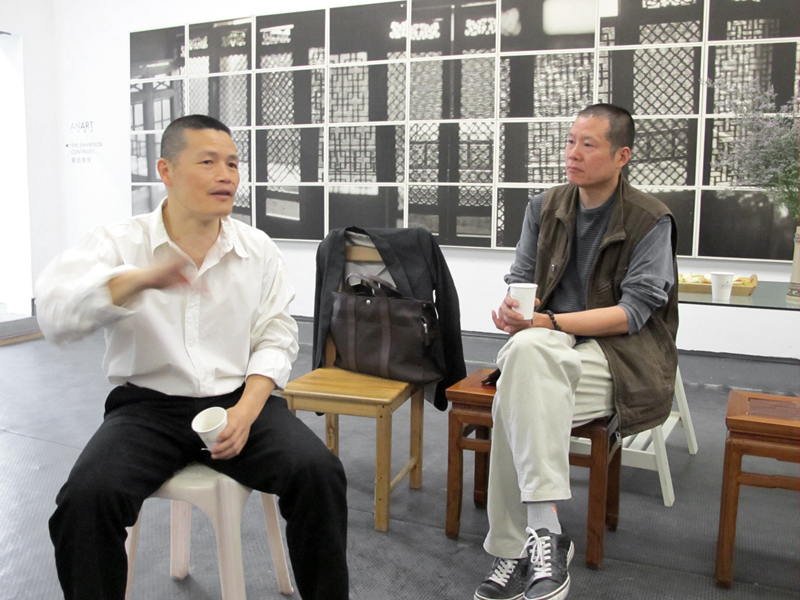Silence is Space
The Photography of Christopher Taylor
by Monica Dematté
I love Christopher Taylor's photographs and, if someone I enthusiastically show them to happens to ask why, I feel an incompatibility that cannot be smoothed out through discussions or explanations. I just end up shrugging, feeling disappointed. I am not seized by a didactic afflatus and have no intention of illustrating my point; rather, I cannot do so. One either has, or does not have, a certain sensibility; it can't be learned or taught.
I also love the writings of Robert Adams, and am almost certain that Christopher also admires them. Both share a love of nature and take the time to track and observe its splendors, given that “those willows edging the river were splendid in the spring […] and could be more splendid still in September.”
Yet time is not a “seasonal” entity in Christopher's photographs, not to mention a “fleeting” one: he does not immortalize a given moment through a snap of his camera, but captures and bears witness to the less mortal, more durable nature of “reality.” The feeling I was struck with and enchanted by, right from the outset, was a sense of timelessness. These are places and viewpoints that are not subject to changing moods, or the chaotic din of passersby, or even the transient synergies arising from a chance encounter, but instead constitute the distilled essence of an artistic vision that is enacted through subtraction. A feel for history, for the past, which Christopher is very much interested in, perhaps because of his nostalgia for an “original” simplicity, which has gradually become ever more complicated and tainted, is expressed by singling out and selecting a few “durable” symbols, which are “emblems that, once seen, cannot be forgotten or confused.”
Visible Cities
Whenever Christopher photographs cities, although he carefully attempts to avoid a human presence that would make one recognize the given moment, thus circumscribing the image's scope, he chooses to refer to significant historical periods. Such is the case with Red Square, whose setting is Calcutta, or with his last series, Immobile, shot in China and inspired by Italo Calvino's Invisible Cities. I'm under the impression that the photographer has accepted the writer's invitation to compose “a last love poem in honor of cities, at a time in which it is becoming ever more difficult to live in them.” Perhaps Christopher, within the bounds of what Marco Polo in Invisible Cities refers to “the hell of the living,” has chosen the second, more painstaking, of the possible means we each have of dealing with it: “to seek out, and learn to recognize, who and what, in the midst of hell, is not hell, and both make room for it and make it last.”
The “lack of noise” that pervades the normally crowded, boisterous places the photographer has managed to surprisingly catch during rare moments of quiet desertion, evoke contrasting feelings in the viewer. Whoever is acquainted with those places in their state of “fullness” will feel a sense of bewilderment alongside a sense of familiarity, which is perhaps greater than that felt by those who are seeing them for the first time and are likely to think that is their normal condition.
In any case, although they refer to “reality,” Christopher's images do not serve as documentaries or narratives. The silence and space they offer up to us need not rely on anything else beyond their naked, beautiful existence in order to be meaningful and to elicit emotions. The viewer too must discover how to free himself from the trappings of transience and dig a bit deeper, to the “pulsing nucleus” of existence itself.
Among other things, in his search for the symbols of bygone eras, Taylor has devoted himself to the legacy of classic Chinese civilization as it is to be found in the Yellow River Basin and to the vestiges of British colonialism in India. While he is captivated by the overwhelming beauty and power of the natural landscape, laden with mystery and seemingly chaotic, the artist's human condition, which is subject to time's course and the traces it leaves in its wake, leads him to seek out that which is eternal in the form of the durable, if transient, emblems left upon the earth by the human race.
Yet the photographer also likes to feel he is an “outsider,” a foreigner who is detached from the cultures he photographs, perhaps because that is the only way in which he is able to delve deeper, to leave behind feelings of attachment, whether positive or negative, which would mar his vision, which aims to “strip the flesh” off reality, allowing its livid bones to stand out.
In India, the relatively recent past of the British colonization of a city like Calcutta, which seems to have remained frozen in time to a century ago, reproduces something that is familiar (a “London in the tropics,” as Taylor calls it), yet different at the same time. Given that I believe we primarily seek elements that accord with our natural sensibilities in whatever strikes our fancy and draws our attention, the sense of familiarity tinged with alienation, along with that of suspended time, afforded by Calcutta constitute a fertile source of inspiration for Taylor. The decision to photograph the interiors of several buildings, in all their secluded stillness, has allowed him to further distance himself from the stereotypical images of a colorful, clamorous India, crowded and picturesque. Features that do not jibe with the photographer's vision, which seems everywhere aimed at attaining the greatest simplicity.
Besides a marked personal preference for it, even the artist's use of black and white film stems from the fact that it may be developed and printed autonomously. Christopher prefers to “focus on the concept, rather than the technique.” The use of a large format camera means that every detail is sharply rendered. Moreover, the rather painstaking process of setting up the camera, which, within Calcutta's anachronistic interiors, Christopher places in such a way as to obtain very similar points of view, gives him the time to thoughtfully reach a colder, more detached view.
The Chinese cities that Taylor has photographed in recent years, following his stunning series, Stèles, which I shall discuss below, very aptly show something which, while constituting yet again a “distillation” of thought and inspiration - and I wouldn't know which comes first - is quite glaring in modern-day China: the lack of individuation. It is interesting to note that just one photograph shows a place that may be readily identified and recognized: that of the ancient city of Xi'an, whose skyscrapers soar beyond the still-extant old stone walls that once encircled the city. The places that appear in the rest could be anywhere. They are small-to-medium-sized cities (by Chinese standards), where modernization has taken place on a lesser, humbler scale with respect to the coastal cities, and in which old neighborhoods have been torn down and replaced with newly built ones that, due to the poor quality of the materials used and the lack of architectural sophistication, bear a worn, ramshackle air despite their recent construction. Christopher's camera manages to catch certain details that offer a respite from the desolate squalor of the disheveled buildings, rudimentary construction skills, and randomly overlapping buildings, all erected hastily, with no planning. Even for those who, like him, manage to find poetry in simple objects and “unspectacular” landscapes, modern China's urban environments offer scarce opportunities for reprieve. It is a “sustainable hell” that is such thanks to the human warmth of its inhabitants, but the latter is something Christopher benefits from during shared meals rather than during his long camera-toting expeditions.
This series of photographs seems to essentially constitute a dreamer's attempt to accept reality - albeit in its barest elements - and to single out certain unusual, evocative details in light of the impossible task of wholly assimilating it with respect to his individual sensibility.
Ineffable Macrocosms and Microcosms
I know that, despite his scientific background, Christopher is attracted by that which is inexpressible and mysterious, more than by classifications, exact calculations and predictions. He loves to “lose himself” in nature with an even greater abandon and pleasure than that which cities afford him.
I find that the Stèles series, which focuses on China's Yellow River Basin, shares a few elements in common with the Iceland series, to which were recently added a number of photos taken on Westman Island. I think the reason for this may be that Christopher feels more at ease in these places and they seem to perfectly echo his spirit.
It is not easy to fully grasp the reasons for our ending up in one place as opposed to another. If we exclude chance, which constitutes an easy, useless explanation, one would appear to be guided by a personal “choice,” or external motives. Instead, perhaps these factors all merge into an inner “necessity” that leads us wherever we must go so as to give us the means of undergoing certain experiences.
Christopher first visited China in the late eighties, only to make several return visits upon recognizing that this was a place that needed – and was worth taking - time to explore in order to gain a deeper knowledge and understanding of it. His reading of the poems of Segalen, a twentieth-century French writer and traveler, lead him to look beyond a facile exoticism (although Segalen did write an essay on exoticism). Still landscapes imbued with a Biblical grandeur, along with the small details of day-to-day life, in their “insipid” appearance (in the sense used by French theorist, François Jullien, in his Eloge de la fadeur), alternate in such a way as to highlight an approach that, while rarefied, is not a-temporal. Time is present, yet it is not real time, but is rather made up of the slow, weary stratification of dust that has been unsettled by car tires or blown through the desert, upon a stele bearing engraved calligraphy, a peeling fake leather armchair, or an old radio. It is as if Taylor were expressing in visual terms the Buddhist capacity to “see all the world in a grain of mustard”: the large and the small, present and past, motion and stillness, are to be found in all aspects of “reality” if one is capable of noting them, or rather, if one already finds them within oneself.
Chinese landscapes are strikingly humanized, as in the original meaning of both the Italian term, paesaggio, and the French term paysage, which “both derive from the Indo-European root, pak, which means the act of burial, thus that of cultivation, which stand to mean land that has been shaped and transfigured due to the presence of man” (Giovanni Chiaramonte). The layers of civilization have so profoundly penetrated the land that the hills have become ancient tombs, and Taylor is aware of this, albeit without having any concrete proof of it. He respects and admires the indescribable synthesis and elegance of Chinese calligraphy, which the literati ascribe to the spirit that animates all living things, even without understanding its significance.
The “pure” Icelandic landscapes, with their lack of human traces, are those in which the primeval, mysterious forces of nature are best expressed. They are also the only ones where time's passage is truly not marked by the succession of days and years, dynasties or governments, but by the wind and rain, the tides and clouds. I have at times felt so attracted to them as to ask myself whether the photographer himself does not here genuinely feel he has reached the peak of his attunement with the world. Or if, like an Italian classical painter, he attempts to include the traces of a human passage so as to render the images more familiar and less ominous. The image of an open sea, with the light sharply dividing the surface into brighter and darker areas; the dusky stretches of black sand where a wave has just retreated; distant cliffs jutting over the sea and darkly reflected upon the water's surface; or even a small dead mole lying on a clump of soil with an air of composure in its disarming abandon. These are all images that might move the souls of those who feel they are one with the universe at its beginnings, in all its terrible grandeur, yet laden with surprising nuances and details.
It is true that an exclusive, total relationship with nature is no longer available to us, who are accustomed to living in sheltered environments. Hence the wild unpredictability of Iceland's natural habitats has been somewhat tamed. Here and there appear a road leading towards the horizon, a motocross track lined with worn car tires, or the sharp outlines of a ferryboat's bulwarks whose straight lines hem in the clouds' hazy contours.
In Iceland Christopher also follows the lives of people he knows; the singular lives of seafaring folk, or of people who have adopted a simple way of life in the midst of a harsh environment, striving to soften it with an intimate, human touch. Four spare nails on a white wall, a huge vase overflowing with fake flowers, an armchair, a simple cup...objects that remind him of someone, or of a given moment, day, or perhaps the ebb and flow of the passing days. They strike us with their air of pregnant simplicity, and we are surprised that someone would take note of them, while likewise catching our attention and leading us to consider a possibility we don't usually avail ourselves of. That of gazing upon, and allowing ourselves to be touched by, at least some of the all-too-many objects that surround us, thus considering them under a new light.
Perhaps this is one way to view Christopher's work: while the objects that he has identified stand out in stark desolation within a bare space, they are imbued with a weightiness that stems from their seeming to resonate and speak to us amid the silence.
It is up to us to hear what they are saying.
Vigolo Vattaro, 5 March 2010
Translation: Francesca Giusti
The Photography of Christopher Taylor
by Monica Dematté
I love Christopher Taylor's photographs and, if someone I enthusiastically show them to happens to ask why, I feel an incompatibility that cannot be smoothed out through discussions or explanations. I just end up shrugging, feeling disappointed. I am not seized by a didactic afflatus and have no intention of illustrating my point; rather, I cannot do so. One either has, or does not have, a certain sensibility; it can't be learned or taught.
I also love the writings of Robert Adams, and am almost certain that Christopher also admires them. Both share a love of nature and take the time to track and observe its splendors, given that “those willows edging the river were splendid in the spring […] and could be more splendid still in September.”
Yet time is not a “seasonal” entity in Christopher's photographs, not to mention a “fleeting” one: he does not immortalize a given moment through a snap of his camera, but captures and bears witness to the less mortal, more durable nature of “reality.” The feeling I was struck with and enchanted by, right from the outset, was a sense of timelessness. These are places and viewpoints that are not subject to changing moods, or the chaotic din of passersby, or even the transient synergies arising from a chance encounter, but instead constitute the distilled essence of an artistic vision that is enacted through subtraction. A feel for history, for the past, which Christopher is very much interested in, perhaps because of his nostalgia for an “original” simplicity, which has gradually become ever more complicated and tainted, is expressed by singling out and selecting a few “durable” symbols, which are “emblems that, once seen, cannot be forgotten or confused.”
Visible Cities
Whenever Christopher photographs cities, although he carefully attempts to avoid a human presence that would make one recognize the given moment, thus circumscribing the image's scope, he chooses to refer to significant historical periods. Such is the case with Red Square, whose setting is Calcutta, or with his last series, Immobile, shot in China and inspired by Italo Calvino's Invisible Cities. I'm under the impression that the photographer has accepted the writer's invitation to compose “a last love poem in honor of cities, at a time in which it is becoming ever more difficult to live in them.” Perhaps Christopher, within the bounds of what Marco Polo in Invisible Cities refers to “the hell of the living,” has chosen the second, more painstaking, of the possible means we each have of dealing with it: “to seek out, and learn to recognize, who and what, in the midst of hell, is not hell, and both make room for it and make it last.”
The “lack of noise” that pervades the normally crowded, boisterous places the photographer has managed to surprisingly catch during rare moments of quiet desertion, evoke contrasting feelings in the viewer. Whoever is acquainted with those places in their state of “fullness” will feel a sense of bewilderment alongside a sense of familiarity, which is perhaps greater than that felt by those who are seeing them for the first time and are likely to think that is their normal condition.
In any case, although they refer to “reality,” Christopher's images do not serve as documentaries or narratives. The silence and space they offer up to us need not rely on anything else beyond their naked, beautiful existence in order to be meaningful and to elicit emotions. The viewer too must discover how to free himself from the trappings of transience and dig a bit deeper, to the “pulsing nucleus” of existence itself.
Among other things, in his search for the symbols of bygone eras, Taylor has devoted himself to the legacy of classic Chinese civilization as it is to be found in the Yellow River Basin and to the vestiges of British colonialism in India. While he is captivated by the overwhelming beauty and power of the natural landscape, laden with mystery and seemingly chaotic, the artist's human condition, which is subject to time's course and the traces it leaves in its wake, leads him to seek out that which is eternal in the form of the durable, if transient, emblems left upon the earth by the human race.
Yet the photographer also likes to feel he is an “outsider,” a foreigner who is detached from the cultures he photographs, perhaps because that is the only way in which he is able to delve deeper, to leave behind feelings of attachment, whether positive or negative, which would mar his vision, which aims to “strip the flesh” off reality, allowing its livid bones to stand out.
In India, the relatively recent past of the British colonization of a city like Calcutta, which seems to have remained frozen in time to a century ago, reproduces something that is familiar (a “London in the tropics,” as Taylor calls it), yet different at the same time. Given that I believe we primarily seek elements that accord with our natural sensibilities in whatever strikes our fancy and draws our attention, the sense of familiarity tinged with alienation, along with that of suspended time, afforded by Calcutta constitute a fertile source of inspiration for Taylor. The decision to photograph the interiors of several buildings, in all their secluded stillness, has allowed him to further distance himself from the stereotypical images of a colorful, clamorous India, crowded and picturesque. Features that do not jibe with the photographer's vision, which seems everywhere aimed at attaining the greatest simplicity.
Besides a marked personal preference for it, even the artist's use of black and white film stems from the fact that it may be developed and printed autonomously. Christopher prefers to “focus on the concept, rather than the technique.” The use of a large format camera means that every detail is sharply rendered. Moreover, the rather painstaking process of setting up the camera, which, within Calcutta's anachronistic interiors, Christopher places in such a way as to obtain very similar points of view, gives him the time to thoughtfully reach a colder, more detached view.
The Chinese cities that Taylor has photographed in recent years, following his stunning series, Stèles, which I shall discuss below, very aptly show something which, while constituting yet again a “distillation” of thought and inspiration - and I wouldn't know which comes first - is quite glaring in modern-day China: the lack of individuation. It is interesting to note that just one photograph shows a place that may be readily identified and recognized: that of the ancient city of Xi'an, whose skyscrapers soar beyond the still-extant old stone walls that once encircled the city. The places that appear in the rest could be anywhere. They are small-to-medium-sized cities (by Chinese standards), where modernization has taken place on a lesser, humbler scale with respect to the coastal cities, and in which old neighborhoods have been torn down and replaced with newly built ones that, due to the poor quality of the materials used and the lack of architectural sophistication, bear a worn, ramshackle air despite their recent construction. Christopher's camera manages to catch certain details that offer a respite from the desolate squalor of the disheveled buildings, rudimentary construction skills, and randomly overlapping buildings, all erected hastily, with no planning. Even for those who, like him, manage to find poetry in simple objects and “unspectacular” landscapes, modern China's urban environments offer scarce opportunities for reprieve. It is a “sustainable hell” that is such thanks to the human warmth of its inhabitants, but the latter is something Christopher benefits from during shared meals rather than during his long camera-toting expeditions.
This series of photographs seems to essentially constitute a dreamer's attempt to accept reality - albeit in its barest elements - and to single out certain unusual, evocative details in light of the impossible task of wholly assimilating it with respect to his individual sensibility.
Ineffable Macrocosms and Microcosms
I know that, despite his scientific background, Christopher is attracted by that which is inexpressible and mysterious, more than by classifications, exact calculations and predictions. He loves to “lose himself” in nature with an even greater abandon and pleasure than that which cities afford him.
I find that the Stèles series, which focuses on China's Yellow River Basin, shares a few elements in common with the Iceland series, to which were recently added a number of photos taken on Westman Island. I think the reason for this may be that Christopher feels more at ease in these places and they seem to perfectly echo his spirit.
It is not easy to fully grasp the reasons for our ending up in one place as opposed to another. If we exclude chance, which constitutes an easy, useless explanation, one would appear to be guided by a personal “choice,” or external motives. Instead, perhaps these factors all merge into an inner “necessity” that leads us wherever we must go so as to give us the means of undergoing certain experiences.
Christopher first visited China in the late eighties, only to make several return visits upon recognizing that this was a place that needed – and was worth taking - time to explore in order to gain a deeper knowledge and understanding of it. His reading of the poems of Segalen, a twentieth-century French writer and traveler, lead him to look beyond a facile exoticism (although Segalen did write an essay on exoticism). Still landscapes imbued with a Biblical grandeur, along with the small details of day-to-day life, in their “insipid” appearance (in the sense used by French theorist, François Jullien, in his Eloge de la fadeur), alternate in such a way as to highlight an approach that, while rarefied, is not a-temporal. Time is present, yet it is not real time, but is rather made up of the slow, weary stratification of dust that has been unsettled by car tires or blown through the desert, upon a stele bearing engraved calligraphy, a peeling fake leather armchair, or an old radio. It is as if Taylor were expressing in visual terms the Buddhist capacity to “see all the world in a grain of mustard”: the large and the small, present and past, motion and stillness, are to be found in all aspects of “reality” if one is capable of noting them, or rather, if one already finds them within oneself.
Chinese landscapes are strikingly humanized, as in the original meaning of both the Italian term, paesaggio, and the French term paysage, which “both derive from the Indo-European root, pak, which means the act of burial, thus that of cultivation, which stand to mean land that has been shaped and transfigured due to the presence of man” (Giovanni Chiaramonte). The layers of civilization have so profoundly penetrated the land that the hills have become ancient tombs, and Taylor is aware of this, albeit without having any concrete proof of it. He respects and admires the indescribable synthesis and elegance of Chinese calligraphy, which the literati ascribe to the spirit that animates all living things, even without understanding its significance.
The “pure” Icelandic landscapes, with their lack of human traces, are those in which the primeval, mysterious forces of nature are best expressed. They are also the only ones where time's passage is truly not marked by the succession of days and years, dynasties or governments, but by the wind and rain, the tides and clouds. I have at times felt so attracted to them as to ask myself whether the photographer himself does not here genuinely feel he has reached the peak of his attunement with the world. Or if, like an Italian classical painter, he attempts to include the traces of a human passage so as to render the images more familiar and less ominous. The image of an open sea, with the light sharply dividing the surface into brighter and darker areas; the dusky stretches of black sand where a wave has just retreated; distant cliffs jutting over the sea and darkly reflected upon the water's surface; or even a small dead mole lying on a clump of soil with an air of composure in its disarming abandon. These are all images that might move the souls of those who feel they are one with the universe at its beginnings, in all its terrible grandeur, yet laden with surprising nuances and details.
It is true that an exclusive, total relationship with nature is no longer available to us, who are accustomed to living in sheltered environments. Hence the wild unpredictability of Iceland's natural habitats has been somewhat tamed. Here and there appear a road leading towards the horizon, a motocross track lined with worn car tires, or the sharp outlines of a ferryboat's bulwarks whose straight lines hem in the clouds' hazy contours.
In Iceland Christopher also follows the lives of people he knows; the singular lives of seafaring folk, or of people who have adopted a simple way of life in the midst of a harsh environment, striving to soften it with an intimate, human touch. Four spare nails on a white wall, a huge vase overflowing with fake flowers, an armchair, a simple cup...objects that remind him of someone, or of a given moment, day, or perhaps the ebb and flow of the passing days. They strike us with their air of pregnant simplicity, and we are surprised that someone would take note of them, while likewise catching our attention and leading us to consider a possibility we don't usually avail ourselves of. That of gazing upon, and allowing ourselves to be touched by, at least some of the all-too-many objects that surround us, thus considering them under a new light.
Perhaps this is one way to view Christopher's work: while the objects that he has identified stand out in stark desolation within a bare space, they are imbued with a weightiness that stems from their seeming to resonate and speak to us amid the silence.
It is up to us to hear what they are saying.
Vigolo Vattaro, 5 March 2010
Translation: Francesca Giusti
